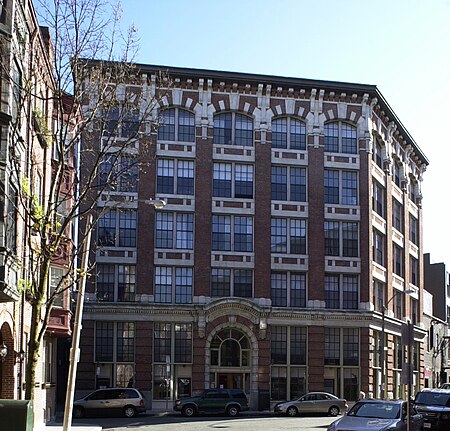Vermont Building

The Vermont Building is a historic building at 10 Thacher Street in the North End neighborhood of Boston, Massachusetts. The six-story brick and marble building was designed by Arthur Bowdith and Edward Stratton and built in 1904. Its construction was funded by Redfield Proctor, a United States Senator from Vermont, and one of the owners of the Vermont Marble Company. It originally housed retail establishments on the ground floor, and commercial, warehousing, and light manufacturing facilities on the upper floors, including facilities of the Vermont Marble Company. It now contains loft apartments. The building was listed on the National Register of Historic Places in 1984.
Excerpt from the Wikipedia article Vermont Building (License: CC BY-SA 3.0, Authors, Images).Vermont Building
Thacher Street, Boston North End
Geographical coordinates (GPS) Address Nearby Places Show on map
Geographical coordinates (GPS)
| Latitude | Longitude |
|---|---|
| N 42.365388888889 ° | E -71.056694444444 ° |
Address
Vermont Building
Thacher Street
02113 Boston, North End
Massachusetts, United States
Open on Google Maps








